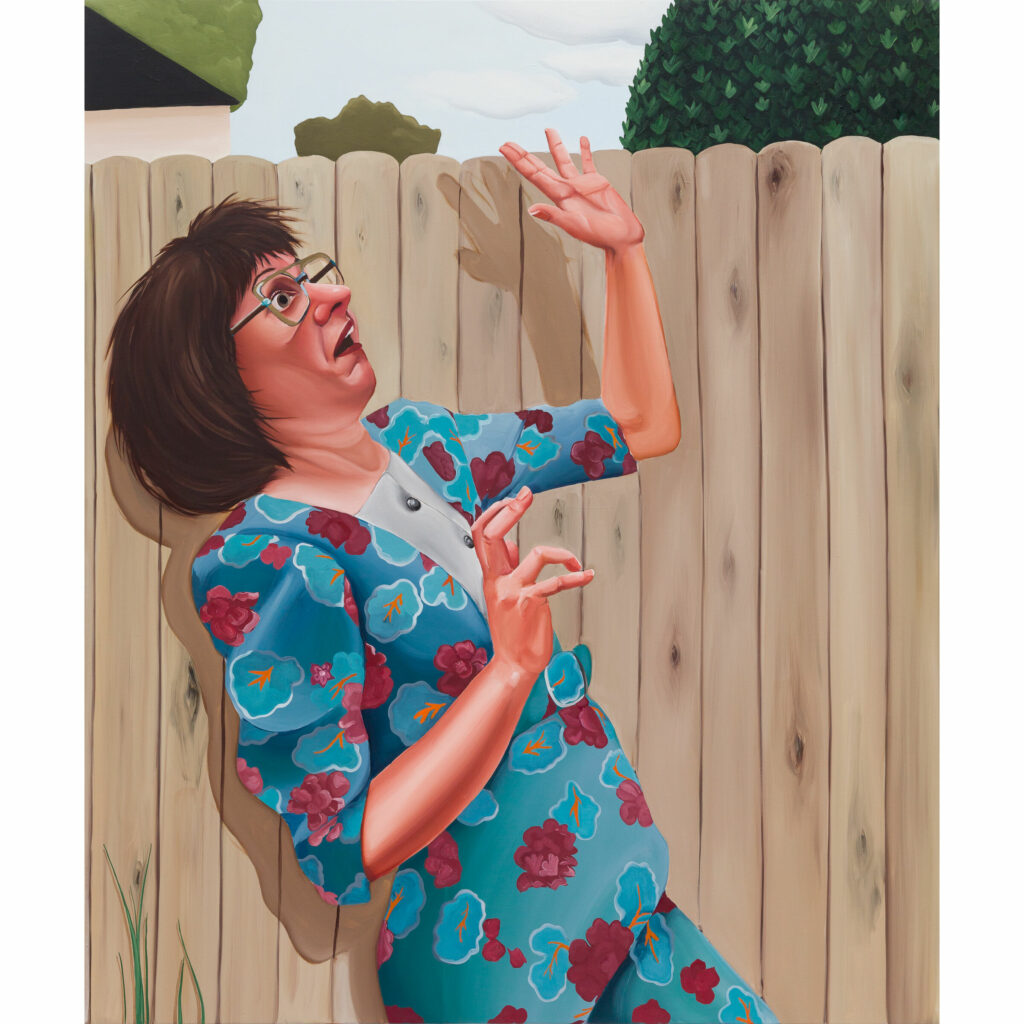Blockbuster
2011 - Painting (Painting)
Conrad Ruiz
Conrad Ruiz loves to paint subjects related to the “boy zone”: video games, weapons, games, science fiction, fantasy, and special effects. He also often works at a very large scale to emphasize a connection to the tradition of history painting. Blockbuster (2011) was, at the time of its creation, the largest watercolor painting he had ever made. This commissioned piece combines his bombastic and playful style with a tribute to San Francisco’s thriving arts and culture scenes. It is a lively depiction of famous landmarks in the city, and a somewhat fanciful and lighthearted recapitulation of how a potential earthquake would shake things up in the ultimate “boy zone.”
Conrad Ruiz makes watercolor paintings of fantastic scenes. Bursts of color and energy sit behind flying figures and animals. Images become painted patterns, as rows of repeated objects and buildings’ striations verge on geometric abstraction. Ruiz’ identifies his work with the “ultimate boy zone”, and the connection is clear. His paintings are populated by explosions, giant sharks, and athletes. Ruiz creates his painting carefully, tracing projected images and carefully following lines. The semi-transparency of his watercolor fills gives his otherwise firm images a shimmering quality, contributing to their overall impression of dreamy unreality.
Colors:
Related works featuring themes of: » Animals, » Celebrity, » Figurative Art, » Figurative Painting
» see more

© » KADIST
Douglas Gordon
1996In Monster (1996-97), the artist’s face becomes grotesque through the application of strips of transparent adhesive tape, typical of Gordon’s performance-based films that often depict his own body in action...

© » KADIST
Nathaniel Dorsky
2010Dorsky’s pieces included in the Kadist Collection are small still photographs from twelve of his most important films...

© » KADIST
John Houck
2013Houck’s Peg and John was made as part of a series of photographic works that capture objects from the artist’s childhood...

© » KADIST
Elisheva Biernoff
2009Last Postcards is a series of three small double-sided paintings on plywood in which Biernoff imagines the last communications from explorers lost in the wilderness...
Other related works, blended automatically
» see more

© » KADIST
Conrad Ruiz
2009It may take a minute to recognize the background of New Fall Lineup – the colors are tweaked into a world of cartoon and candy, and it is covered by leaping energetic figures and flying squirrels...

© » KADIST
Douglas Gordon
1996In Monster (1996-97), the artist’s face becomes grotesque through the application of strips of transparent adhesive tape, typical of Gordon’s performance-based films that often depict his own body in action...

© » KADIST
Nathaniel Dorsky
2010Dorsky’s pieces included in the Kadist Collection are small still photographs from twelve of his most important films...

© » KADIST
Douglas Gordon
2002Blind Spencer is part of the series “Blind Stars” including hundreds of works in which the artist cut out the eyes of Hollywood stars, in a symbolically violent manner...
Related works sharing similar palette
» see more

© » DAZED DIGITAL
Visit a new exhibition shedding light on man of mystery, Martin Margiela | Dazed â¬…ï¸ Left Arrow *ï¸âƒ£ Asterisk â Star Option Sliders âœ‰ï¸ Mail Exit Fashion Round-up …plus all the other fashion news you missed this week, from a new Balenciaga video game to Robyn Lynch’s London exhibition, and Entire Studios’ Selfridges pop-up 15 December 2023 Text Dominic Cadogan Margiela: In the Void 12 Martin Margiela is as much of an enigma today as he was while at the helm of the brand – which he stepped away from in 2009...
Other works by: » Conrad Ruiz
» see more

© » KADIST
Conrad Ruiz
2009It may take a minute to recognize the background of New Fall Lineup – the colors are tweaked into a world of cartoon and candy, and it is covered by leaping energetic figures and flying squirrels...
Related works found in the same semantic group
» see more

© » KADIST
Korakrit Arunanondchai
2017His untitled paintings express his concern regarding perception in abstract form...






